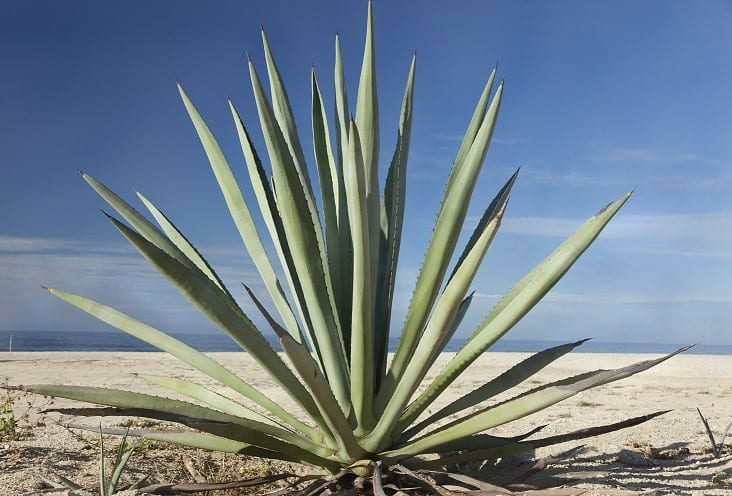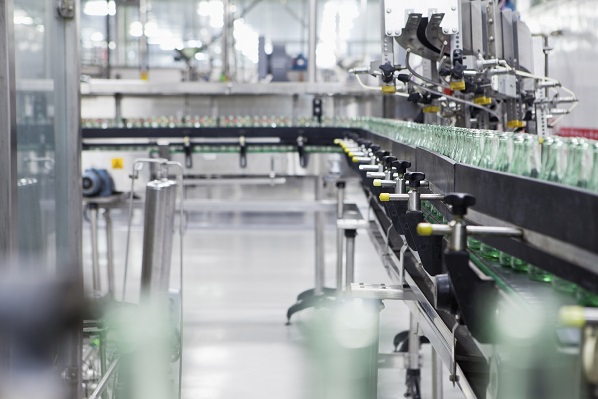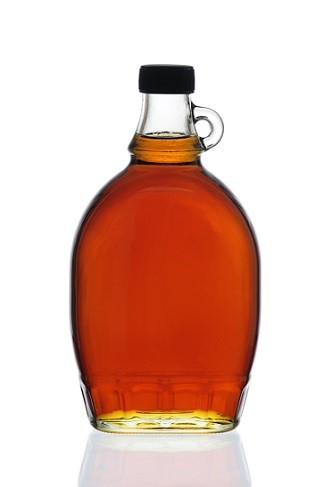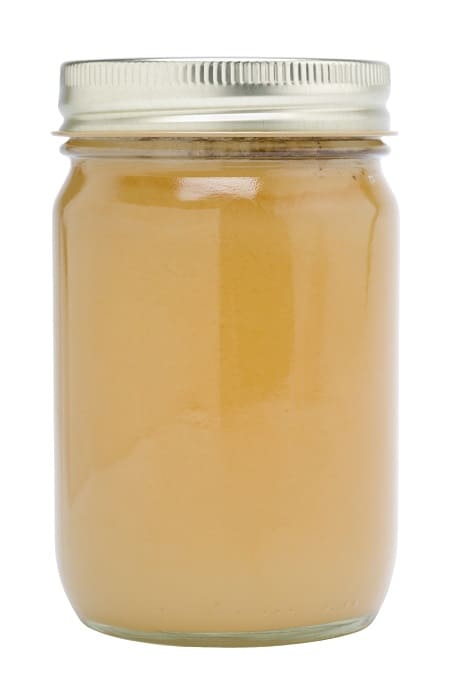 Agave nectar is a gold coloured syrup extracted from the agave plant in Mexico. These days, millions of health conscious people are flocking to agave nectar for a “healthy”, “raw” and “100% natural” sugar alternative.
Agave nectar is a gold coloured syrup extracted from the agave plant in Mexico. These days, millions of health conscious people are flocking to agave nectar for a “healthy”, “raw” and “100% natural” sugar alternative.
Diabetics are told that agave nectar causes a mellower blood sugar spike, adverts speak of the Aztecs using agave nectar as a wound dressing, and agave nectar is supposedly rich in saponins with anti-inflammatory powers. As sweeteners go, agave nectar sits comfortably alongside honey in the public imagination, being loaded with enzymes, antioxidants and rare healing compounds…
…however, all that is total nonsense.
Agave nectar is among the deadliest sweeteners out there. It’s even worse than the dreaded high fructose corn syrup (HFCS), and it’s especially bad for your acne. Even white table sugar is safer!
The problem is that agave nectar bears little resemblance to the nutritious sap once used by the Aztecs. The plant grows naturally in the Southern USA and South America, particularly on volcanic mountain slopes in Mexico.
The plant has impressive stature – 7 to 12 feet in diameter, with leaves up to 8 feet tall. There’s over 100 different species of agave, with varying shapes and sizes. The two most prominent are agave tequilana and agave salmiana. Agave tequilana is heated and fermented to create tequila, the beloved Mexican alcoholic beverage.
Read Annihilate Your Acne – get the greatest diet ever for clear and radiant skin
It’s this image of Mexicans relaxing in the sun with a delicious glass of tequila that agave nectar marketers are desperate to convey to people. One advert says “For thousands of years natives to central Mexico used different species of agave plants for medicine, as well as for building shelter.”
All agave plants ooze plenty of nutritious sap, which Mexicans would traditionally boil to produce a liquid called miel de agave or aguamiel. This is the agave that the Aztecs used to sweeten their foods, and this is the agave with promising health and acne benefits. Miel de agave is packed with compounds called fructans, which may accelerate the metabolism and help acne by combating insulin resistance.
There’s also antioxidants and enzymes aplenty. This sap collects in the agave plant’s “wound” when you cut one of its stems. It’s the plant’s attempt at repair, and consequently, it’s packed with powerful nutritional substances.
The production process – as far from natural as can be
You can still buy miel de agave for approximately $20 in shops like Whole Foods, and in Mexico, they turn agave nectar sap into a reasonably acne-friendly beer called pulque…
…but almost all agave nectar found in American supermarkets is so processed that it’s unrecognisable. According to manufacturers, agave nectar is transferred into the bottle directly from the succulent leaves. In reality, most agave nectar isn’t made from the sap at all, but rather the giant, pineapple-like root bulb called the piña.
This piña is rich in a form of starchy carbohydrate called inulin, which consists of chains of fructose molecules. What happens next transforms a once healthy product dramatically:
ONE – the piñas are inserted into a mill, where they are crushed into juicy fibres.
Next: the 6 vitamins and minerals which can massively reduce acne
TWO – the agave fiber is run through a diffuser machine, containing hot water which causes the fiber to release its juices. The fiber is discarded.
THREE – the raw agave juice flows through filters, eliminating solid particles which the fiber may have left behind.
FOUR – the raw agave juice is subjected to factory hydrolysis, increasing the temperature to 176F/80C over several hours. This separates the inulin from the juice, alters the ratio between fructose and glucose, and harmonises the more complex polysaccharides into simple sugars with a sweeter taste.
FIVE – the newly refined agave liquid passes through more filters, each smaller than the last.
SIX – as an extra filtering step, the agave juice is chemically polished, to improve clearness and purity.
SEVEN – the agave liquid is funnelled through various ducts and heated to 95C/208F. The water portion evaporates, turning the agave juice into agave syrup.
EIGHT – the agave syrup is placed in a moving tank for a while to homogenise it. “Agave nectar” is born.
With so much heating and chemical catalysts applied, the delicate antioxidants and enzymes are totally obliterated once it becomes agave nectar.
Antioxidants are the big health obsession of the moment, thanks to their powerful life-extending abilities, Boasting of antioxidants on the bottle is a chief way to get consumers hooked. They’re also acne-friendly, quenching free radicals nicely.
But agave nectar has no antioxidants. This study tested the antioxidants of several popular sweeteners, including honey, maple syrup, brown sugar, dark and blackstrap molasses, corn syrup, refined white sugar, and agave nectar. It used the well-established Ferric-Reducing Ability of Plasma (FRAP) system.
Apparently, agave nectar “contained minimal antioxidant activity”. It was equally bereft as refined white sugar and corn syrup. Meanwhile, standard brown sugar, honey and maple syrup showed moderate antioxidant activity. Dark and blackstrap molasses showed high antioxidant activity.
The 7 greatest topical treatments for naturally clear skin
Antioxidants are fantastic for clearing acne, but agave nectar won’t give you any. You’d be better off buying cheap brown sugar.
Other healthy enzymes are destroyed as well. In fact, that’s precisely why agave nectar is heated so harshly; if the heathy enzymes survived, it would ferment and slowly morph into tequila on your shelf.
Fructose – the menace of our time…
 It gets worse though. Agave nectar is actually the unhealthiest sweetener for acne of all time, matching the much reviled high fructose corn syrup with ease. The production processes of the two are nearly identical.
It gets worse though. Agave nectar is actually the unhealthiest sweetener for acne of all time, matching the much reviled high fructose corn syrup with ease. The production processes of the two are nearly identical.
As we discussed, the inulin in the piñas mostly consists of fructose molecules. During the harsh heating of hydrolysis (stage 4), the bonds break down en masse, giving agave nectar massive quantities of fructose compared to glucose.
We discussed here how high fructose corn syrup is an acne nightmare because of its fructose to glucose ratio of roughly 60:40. Table sugar has a ratio of 50:50, which is much better. Although all sugar is highly inflammatory and causes insulin resistance in high doses, only fructose leads to the dreaded non-alcoholic fatty liver disease.
Why bread and pasta are a massive cause of acne
Essentially, vast quantities of fructose overload your liver, which can’t convert it to glycogen (energy) properly. Instead, the fructose gets converted to fat. More and more fructose equals more and more fat.
This chokes the liver out, and impairs its glycogen stores, leaving them unable to detect insulin. Your pancreas produces more insulin to compensate, your blood levels rise, your skin turns oily, and you get acne.
Not to mention that a fatty liver leads to diabetes and a sluggish metabolism. Additionally, fructose satisfies your appetite far less, making you eat more acne-causing junk food, and of course gain weight! Therefore, while all sugar can cause acne, keeping fructose low is an absolute must.
Nowadays, more and more natural acne gurus, bodybuilders, hormone optimisation experts, and even regular doctors are warning against the horrors of corn syrup…
…and agave nectar is dripping with it
 …but what’s less well known is that agave nectar actually contains more fructose than HFCS. Depending on the brand, agave nectar contains 70% to 97% fructose. That’s a truly astronomical amount; no other sweetener contains as much.
…but what’s less well known is that agave nectar actually contains more fructose than HFCS. Depending on the brand, agave nectar contains 70% to 97% fructose. That’s a truly astronomical amount; no other sweetener contains as much.
It’s particularly massive considering its shining reputation of health. Agave nectar is found in health products everywhere, including protein bars eaten by gym rats, energy drinks, nutrition bars and even tea. Adverts particularly target vegans and vegetarians, urging them to add agave nectar to oatmeal and coffee, for instance.
Agave mania has crossed over into the mainstream too. Sales are rising by 8% each year. The number of new agave nectar products coming to market tripled from 56 to 176 annually between 2003 and 2007.
Vitamin D – the greatest nutrient for a bright and glowing skin tone
Diabetics particularly love it because agave nectar has a lower glycaemic index than regular sugar. Theoretically, it won’t spike their blood sugar as much in the short term, but what the adverts don’t mention is that in 2010, the Glycaemic Research Institute “delisted” and banned agave nectar in all food and beverage products. Why? Apparently, five years of clinical trials showed highly negative effects on diabetics.
It’s critical that you don’t fall for this nonsense. Low doses of fructose won’t cause acne, but agave nectar contains massive doses. Its official scientific name is actually “hydrolysed high fructose inulin syrup.”
When bound up in fruit fibres like in watermelons or strawberries, fructose is safer for acne, slowing down the digestion and subsequent absorption into the liver. But agave nectar’s fructose is all free floating. The hardcore factory filtering removes every last trace of fibre. Nothing can hold the fructose back.
Then there’s the chemical catalysts. The polishing and clarification processes involve chemicals like…
- Dicalite
- Clarimex
- Inulin enzymes
- Fructozyme
- Activated charcoal
- Cationic and ionic resins
- Sulfuric and/or hydrofluoric acid
One particularly villain is hydroxymethylfurfural (HMF), AKA 5-hydroxymethyl furfural. This organic compound is created during the intense heating of sugars, in both agave nectar and HFCS. According to this 2009 study, HMF is toxic, carcinogenic, and mutagenic. Colony collapse disorder, a disease which has wiped out one third of the US honey bee population, is blamed on HMF by some researchers. Agave nectar might therefore cause acne by increasing free radicals.
Then there’s hydrofluoric acid. That’s actually code for sodium fluoride, a nightmare for all acne patients.
Also, some sleazy manufacturers have been caught splicing agave nectar with far cheaper corn syrup. Corn syrup has plenty of fructose itself, but also the toxic herbicide glyphosate, which can decimate your healthy gut bacteria.
Green tea – proven to reduce acne by up to 51% after 8 weeks
Some agave shipments have been refused by the FDA, for containing toxic levels of pesticides. Generally, the quality control is very lax, because nearly all US agave nectar products come from Mexico. There’s little insider knowledge of other dirty tricks they may be using. I’ve even seen internet rumours that agave factories use chemicals contaminated with the heavy metal mercury, an acne menace of insulin resistance and inflammation.
Your acne-friendly agave nectar strategy
We could rant all day about how bad agave nectar is for acne. Therefore, I’ll advise you now: avoid agave nectar as an alternative sweetener, and avoid any health foods containing agave nectar as an ingredient. The evidence is overwhelming.
Luckily, news is now reaching the general public. With luck, the agave nectar business will begin to crumble as the very people it was marketed to, health-concerned fitness fanatics, begin to realise what a scam it is.
Word is spreading like wildfire through the acne community already. It’s only a matter of time. Until then, avoid this shady sweetener all you can.
Top notch sweeteners for acne
 If you somehow track down the traditional Mexican miel de agave to an obscure health food shop, then its benefits are very real. The Aztecs used it for supercharging fertility and disinfecting war wounds. Fructose overload is no problem either, because it’s basically sap taken straight from the leaves.
If you somehow track down the traditional Mexican miel de agave to an obscure health food shop, then its benefits are very real. The Aztecs used it for supercharging fertility and disinfecting war wounds. Fructose overload is no problem either, because it’s basically sap taken straight from the leaves.
You can reportedly buy miel de agave in Whole Foods, but unfortunately, it’s extremely expensive and barely available outside of Mexico. Certain agave nectar brands are lower in fructose, but even organic versions contain far too much.
Therefore, if you need a sweetener that combines delicious flavour with an outstanding pedigree for acne, I’d have to recommend a fine bottle of raw honey.
Honey is absolutely bursting with acne-friendly compounds. Its antibacterial activity is phenomenal, thanks to methylgyloxal, a peptide called bee-defensin 1, and numerous other enzymes. These work superbly as a topical treatment, killling p.acnes bacteria nicely, but can also eliminate unfriendly bacterial strains in your gut lining, which unleash inflammation and weaken the digestion of acne nutrients.
My eBook Annihilate Your Acne has loads of gut flora restoration strategies, but I’ll say now that eating honey (in moderation; it’s still high in sugar) is one fantastic secret. Honey also contains its own healthy bacterial strains, which will displace unhealthy ones nicely.
Why using raw honey could revolutionise your skin
Raw honey even contains a unique antioxidant called pinocembrin, alongside many pinostrobins and flavonoids. Plus, in my opinion, honey tastes fantastic. The endless varieties gathered from endless different plants are fascinating to sample.
Honey’s sugar profile is decent too; a fructose to glucose ratio of roughly 51:49. Somehow, honey barely spikes your blood sugar, preventing that annoying post-meal energy slump caused by regular sugar or indeed agave nectar. You can also use honey as a topical treatment; it’s particularly great at calming down red and inflamed acne.
Some raw honeys are luxury items, but this Y.S. Eco Bee Farms (amazon link) jar is raw and nutritious while still being affordable.
As a natural, acne-friendly sweetener, raw honey massacres agave nectar. Rest assured that its health benefits aren’t mythical this time, but your honey simply must be raw, taken straight from the beehive. Pasteurisation destroys all the acne-clearing compounds, leaving the formerly nutritious golden goop sterile and dead.
If you’re too poor even for honey, then the best cheap sweetener for acne is brown sugar. In the study above, basic brown sugar was much higher in antioxidants than agave nectar. It also contains trace acne minerals like iron and magnesium (an overlooked nutrient for acne) and spikes your blood sugar less than white sugar.
Brown sugar is superior to agave nectar for adding to chocolate, tea, coffee, and homemade yoghurt alike.
Conclusion – agave nectar is acne in a bottle
Agave nectar fails miserably at being a health food. It’s unhealthy for your body and unhealthy for your skin. Don’t let the marketing fool you!
The situation with brown sugar shows how ludicrous the agave nectar marketing is. Basically, a luxury product whose very name (agave) means “noble” in Greek has no useful compounds for acne whatsoever. Meanwhile, a completely unremarkable, cheap as sand ingredient found in the cupboard of nearly all chefs worldwide does have acne benefits.
This illustrates a strategy which you should always remember: never believe that all natural products are a godsend, and always do basic research.
NEXT: the ultimate diet for clearing acne permanently
Thanks for reading!
What about raw and ‘organic’ agave?
If it’s true unprocessed sap straight from the agave plant, known as miel de agave, then it will be far healthier as there’s still some antioxidants and nutrients and much less fructose. However it’s so obscure that you’d be better off just using raw honey for a sweetener. Most standard agave products marked as organic will still be massively high in fructose regardless of whether they’re blasted with chemicals.